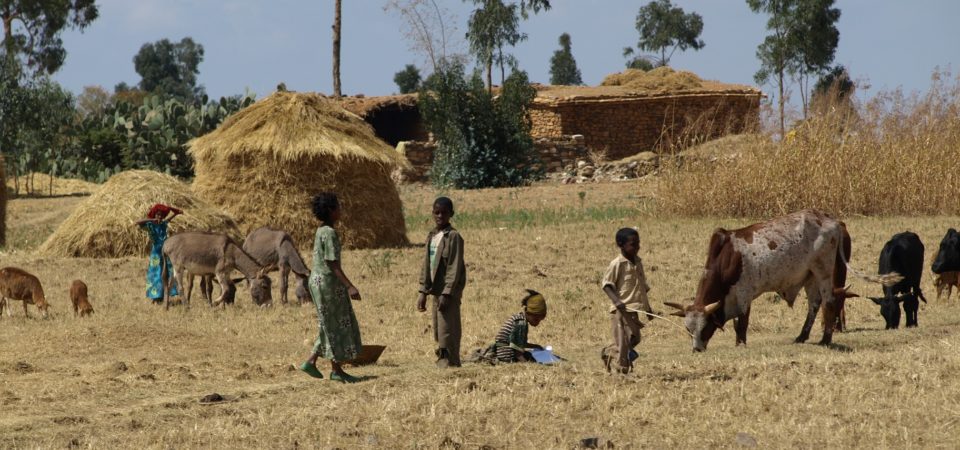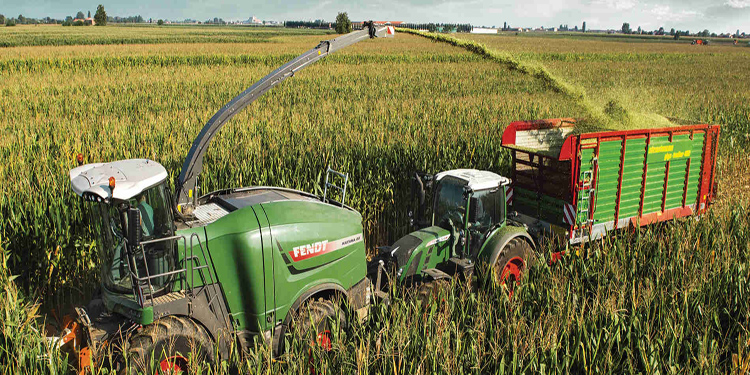Why Ethiopia needs to embrace gene-modification technology

The recent exchanges on Ethiopia’s acceptance of genetically modified (GM) crops and the resulting report of USDA praising the steps our country has taken continue to be informative. My understanding of the debates surrounding GM foods suggests that neat explanations about their usefulness grossly disregard the muddy footprints and messy stories of the technology while the voices of vilification and blanket rejection tend to thrive more on emotional appeal than rigorous science. Let’s start with the basics.
The 21st century is said to be the century of biology and ecology. Thus, for Ethiopia, as one of the globe’s top 50 centers of biodiversity, where better to capitalize on than in understanding and developing its crop and animal varieties and fulfill its long-held potential of being Africa’s breadbasket. Ethiopia is one of the few centers where domestication of crops was practiced at the dawn of agriculture and the country has contributed to the world’s collection of cultivable species – such crops as Teff, coffee, enset, sorghum, millet, etc. It means that our farmers are not new to the genetic modification of organisms since every domestication effort involves selective breeding and recombination of desired characteristics. We also have adopted several foreign plant species (maize, wheat, barley, tomatoes, potatoes, pepper, etc.) some of them only a few centuries ago, without much consideration for their effects on our indigenous species.
Despite these impressive records, our agricultural system stayed firmly rooted in its ancient practices which suffer from abysmal efficiency and very poor productivity. As a result, Ethiopia remains a net importer of crops both for human consumption and for its expanding industries, and there seems to be no natural end to this depressing trend. The consequence is not only a shrinking of profit base for many of the industries but also the misplaced use of the meager hard currency obtained from the export of some raw materials with all the negative impacts on our capacity in importing more useful technologies.
Ironically, Ethiopia has no shortage of cultivable/irrigable land or population able or willing to participate in modern agricultural practices. In fact, Ethiopia’s farming community is estimated to be above 80% of the population– but is unable to feed itself properly let alone supply raw materials for the manufacturing sector. The production by small scale farmers in Ethiopia is demonstrably incapable of keeping pace with the population growth as tens of millions of our people still depend on food handouts every single year and many more live in precarious situations. Therefore, it is pertinent that the country becomes self-sufficient at least for feeding the population with all possible means. And, this is not a very hard task given the scale of its cultivable land and the disproportionately large population whose livelihood is dependent on farming.
The most relevant question is thus how to end this absurdity and persistent tragedy without drastically affecting the livelihood of our farmers and disrupting the biodiversity balance. For a very long period of time, Ethiopia lacked the capacity to introduce mechanized farming and other relevant agricultural technologies. Further, it lagged far behind many (African) countries in developing its policies and relevant practices with regard to the application of plant genetic engineering technology. Arguably the most unhelpful effort on part of the Ethiopian government in the last decade has been the introduction of the Biosafety Proclamation No. 655/2009. It is possible that this proclamation was enacted as a genuine effort to protect the local farmers and the country’s agriculture sector from control by a few foreign biotech industries and create a formidable safeguard against potential fallouts from untended consequences of releasing GM crops. However, it is clear from the outset that the proclamation lacked proper scrutiny by all the relevant stakeholders, not least farmers’ representatives or experts from agricultural research centers in the country. In addition, it failed to recognize the potential of local agro-biotechnology research and innovation and was oblivious to the rapidly changing focus of the debate and policy shifts surrounding this emerging technology from around the world. Thus, our Biosafety Proclamation No. 655/2009 was, by international standards, relatively outdated as soon as it was hastily passed by the parliament (hence the justification for a later amendment as Proclamation No. 896/2015).
It is unclear why modern GM organisms are so divisive and treated as highly toxic materials that should be feared and avoided at all costs. Rigorous analysis done by scientific institutions such as the UK Royal Society and the U.S. National Academy of Sciences has demonstrated that such organisms are at least as safe as their counterparts produced by conventional breeding techniques. For example, the GM cotton that Ethiopia is said to have started cultivating is the widely known Bt variety. In short, Bt is abbreviated from Bacillus thuringiensis, a bacterium species that naturally occurs in soil and produces highly specific insecticidal proteins. This bacterium has been in use, in one form or another, as the most effective, naturally occurring, and environmentally friendly bioinsecticide for more than half-century. Bt spray is currently the dominant bioinsecticide in the world and is authorized for use even by organic farmers worldwide. Therefore, we are talking about a well-characterized gene of a bacterium (which might as well be dwelling in our soils all along). Plants expressing this gene have been tested for more than two decades in several countries and in a wide range of ecological settings for the properties they have been designed for, with no confirmed case of ill effect as food or feed.
I suspect that Ethiopia has been misled or pressured into adopting an overly cautious interpretation of the precautionary principle as was the case in the past in some EU countries. In my opinion, the EU and its policies on GM products (even as progressive as they currently are) cannot be a good lead for Ethiopia. For one, farming practices in the EU are already highly productive even without the need for the introduction of GM. In addition, the sheer proportion of the population involved in the agricultural sector in Ethiopia means that unreasonable restrictions on agricultural biotechnology can have far-reaching consequences. For Ethiopia, the better place to look for inspiration is other developing countries around the world – in Latin America, Asia, and in the continent of Africa itself – for our capacities and needs are likely to be similar.

India, for example, started commercial farming of Bt-cotton in 2002 and at the moment, about 25% of its agricultural land is covered with this variety, the highest proportion in the world. In our continent, South Africa is the pioneer in providing permits for the commercial cultivation of GM crops – for GM cotton and maize – starting in 1997. Egypt has been commercially farming Bt-maize hybrid since 2008, using seeds procured from South Africa (it has since suspended the cultivation due to the lack of proper biosafety laws and other local issues). Ghana, Nigeria, Cameroon, and, our neighboring countries, Sudan, Kenya, Uganda, Tanzania, and Mozambique have all tested and/or adopted the cultivation of GM crops. Furthermore, Nigeria, Kenya, and Uganda are pursuing various genetic modifications to the cassava plant, a staple crop for over half a billion people around the world. It is disingenuous, to say the least, to assert that all of these countries are either threatened or duped into accepting this technology to the detriment of the wellbeing of their population and ecosystems.
Ethiopia, on the other hand, despite having several, experienced agricultural research institutions, is missing out for far too long on the development of its genetic research capacity and utilization of available biotechnologies, especially as compared to many of these African countries. As a commentary on this site made it clear, the Ethiopian team negotiating the Cartagena Protocol, led by Dr. Tewolde-Birhan Gebre-Egziabher, played a key role in formulating a strong African position and had become the continent’s de-facto representative. This had been appreciated and acknowledged by several African countries at that time. Whether this fact can make Ethiopia assume a “Pan-Africanist leadership position in the environmental issues” is completely irrelevant to the issue at hand. What is important is the fact that the Cartagena Protocol aims mainly to provide “an adequate level of protection” to worldwide biodiversity by placing a stringent control on “the transboundary movement, transit, handling and use of all living modified organisms that may have adverse effects on the conservation and sustainable use of biological diversity”. What it is not is an outright ban on the development, test or use of GM organisms for food or feed. In addition, several of the major African countries have since moved on and have come to realize that application GM crops, transgenic technology, and genetic engineering know-how could have a transformative effect on parts their economies provided that these are supported by a strong monitoring regimen. As a result, and contrary to its supposed pan-African leadership, Ethiopia is currently an outlier in the continent when it comes to the exploration of this powerful technology that can potentially transform the living standards of millions of people. Many of the countries that are said to be hesitant in accepting this agricultural biotechnology lack either the capacity to adapt and manage it or the actual need for a rapid transformation of their agricultural practices (they are either food self-sufficient or have no industrial base to supply to or both). In other words, we may as well have once been the continent’s leading voice against GM organisms but it has become apparent that we are leading the wrong league and it is not where we belong – it is unbecoming to our great nation.
What Ethiopia urgently needs is a dynamic regulatory system and strong scientific capacity for the evaluation, authorization, and monitoring of imported GM crops. It also needs to rebuild and expand its capability for fundamental research with the aim of developing local GM species using state-of-the-art methodology. Public-private biotechnology partnerships should be encouraged to work on genetic identification and improvements even in our own indigenous species of plants and animals. Furthermore, since we are negotiating for accession to the World Trade Organization, it is the most relevant time to substantially revise or repeal the Biosafety Proclamation No. 655/2009 (including its latest incarnation, Proclamation No. 896/2015) and streamline other relevant laws in accordance with international standards.
To this writer, the question is not to be why Ethiopia allowed the commercial cultivation of Bt-cotton and has authorized a confined field trial of Bt-maize. It is whether it had conducted a thorough analysis of the existing problems in the sector and identified the effectiveness of these particular strains of GM crops as cost-effective and sustainable solutions. It is not a case of “re-inventing the wheel” but of identifying our desirable targets and requirements, learning from the front-runners, and applying an appropriate level of precautionary principles. The temporary setbacks in Burkina Faso, Africa’s largest producer of cotton at one point, and some regions in India demonstrate that the process of introducing GM crops is far from being a “turn-key” situation. It requires the collaboration of laboratory scientists, policymakers, market leaders, and farmers (end-users) in identifying the required crop characteristic and quality that is suitable for the specific condition of the locality.
In conclusion, agricultural gene-modification technology has sufficiently demonstrated its worth after more than two decades of commercial application and this is reflected in its widespread global adoption.
Therefore, the excessive hesitance of its acceptance by Ethiopia and campaigners that support this stance is unjustifiable either socially, economically, or more importantly, scientifically.







